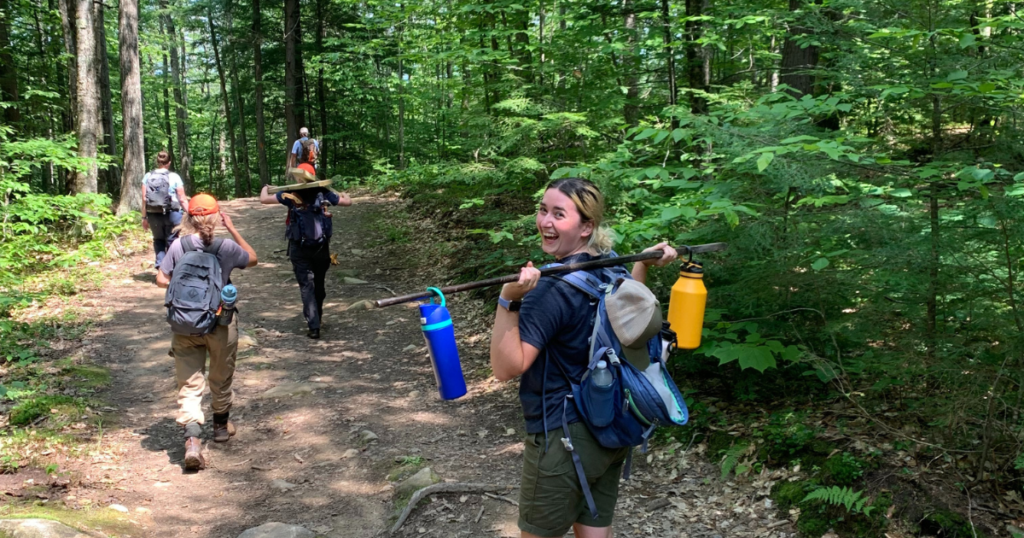Did you know that houses, yards, roads, and driveways are all sources of water pollution in Newfound Lake? When water falls on developed land and runs directly into streams, ponds, rivers, and lakes, it brings with it harmful pollutants. Without proper management, stormwater runoff can cause problems like erosion, flooding, and water pollution in Newfound, even when the area is located miles from the lake. Impervious surfaces like roofs, decks, driveways, and parking lots are big drivers of stormwater runoff.
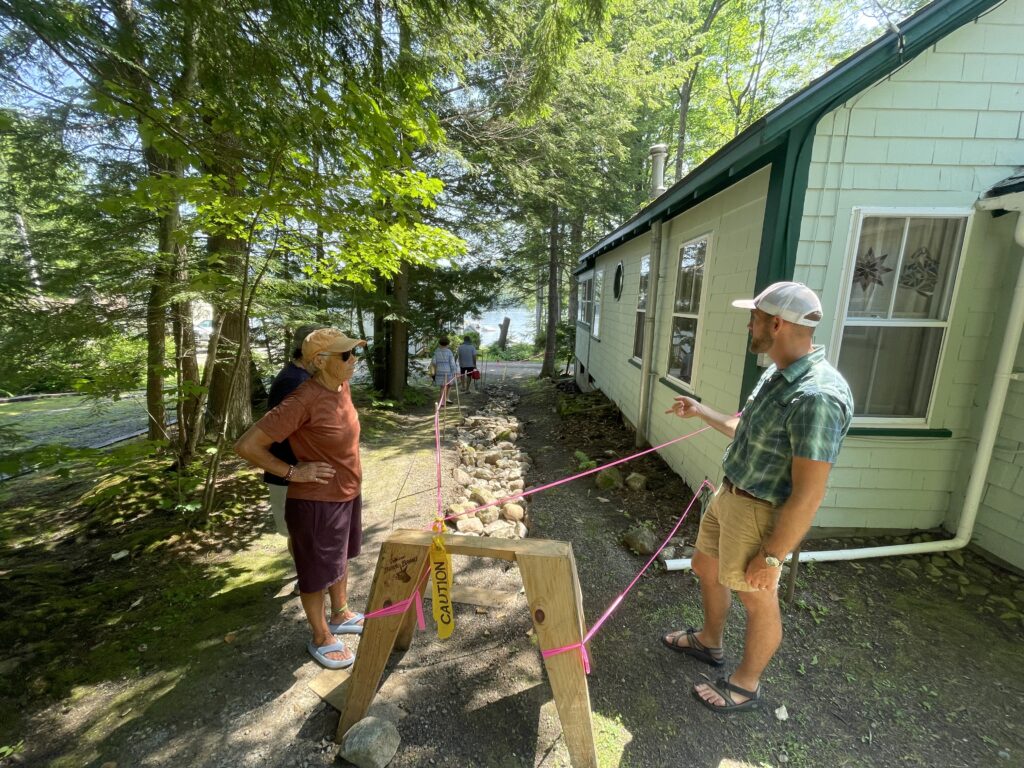
The goal of stormwater management is to direct the water that falls onto impervious surfaces back into the ground so that it can be filtered through the ground before entering any water bodies. With frequent storms and heavy rains this season, the Newfound Lake Region Association has been busy with stormwater assessments and projects throughout the watershed. My fellow Watershed Stewards and I have been fortunate enough to help out with many of these projects and have learned how to assess a property to improve its stormwater management.
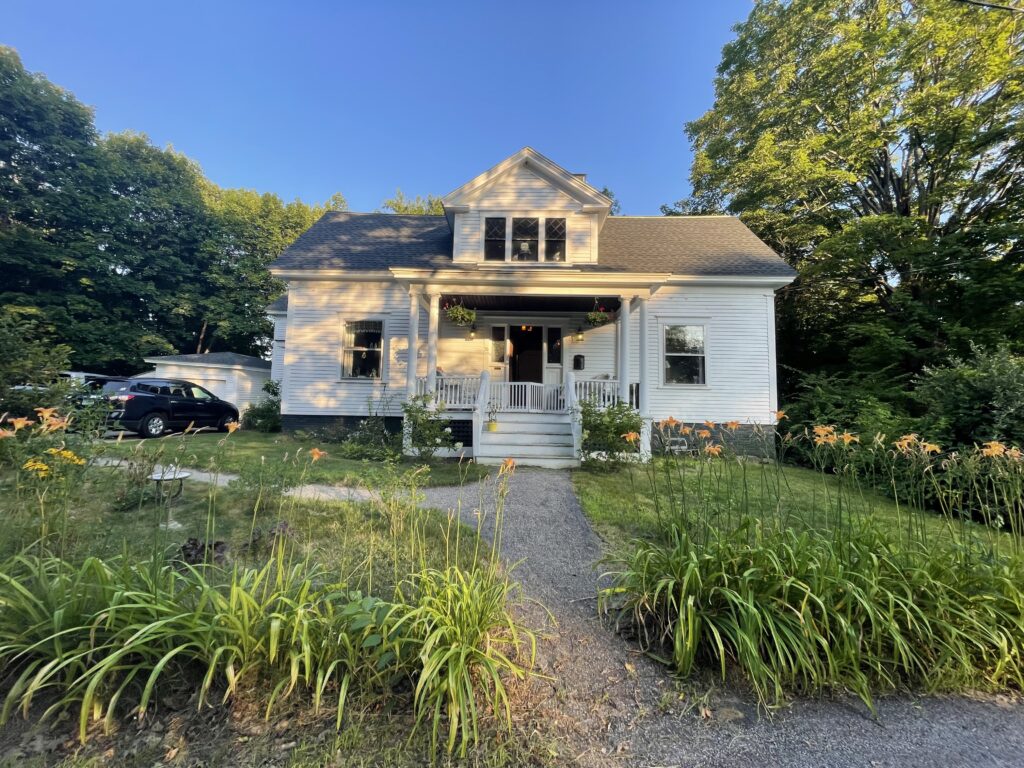
Our goal is to protect the watershed, and we can’t do it alone. All homes contribute to stormwater runoff, including mine! Even if a house is located miles from a water body, if runoff is unable to absorb into the ground, it can travel over impervious surfaces and enter streams or creeks that carry it along. To help prevent water pollution and to show others what they can do to help, I took a look at my family’s home to see how we could better manage our own stormwater runoff.
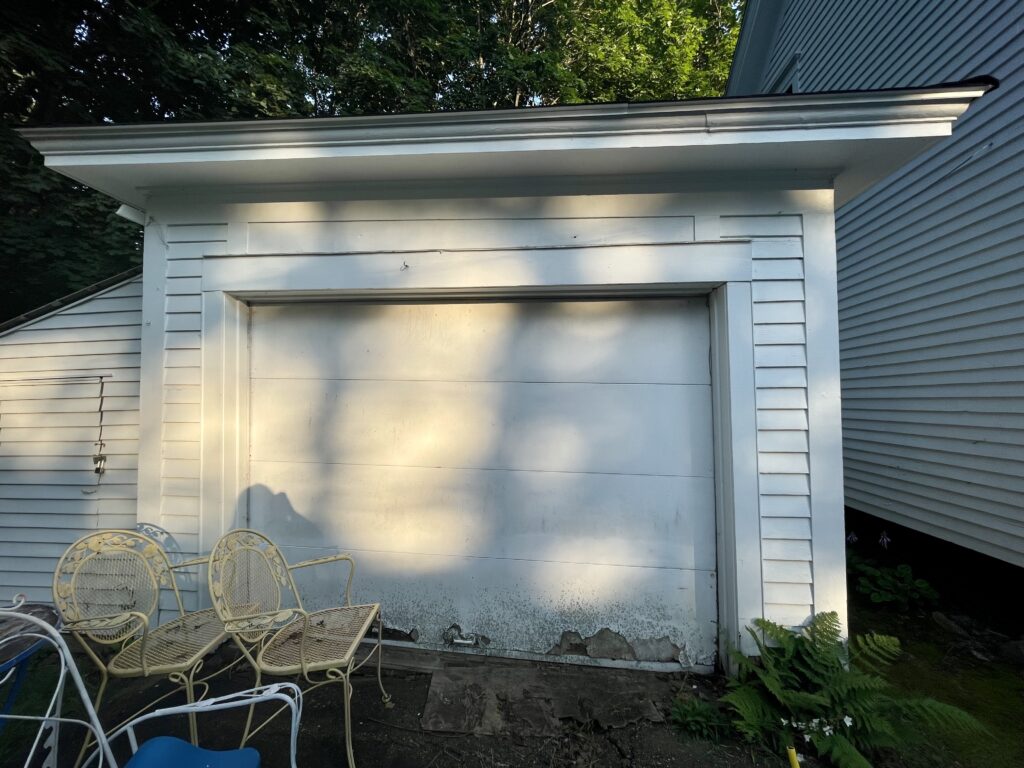
For the assessment, I started out at the front of the house in the driveway. Driveways can be big contributors to water pollution, especially if they’re treated with road salt or other chemicals. Impervious driveways can cause water to speed up as it moves, and more so if they’re slanted. Our driveway is paved and slightly slanted, so water is unable to filter through and runs off the sides instead, creating ruts in the dirt. Additionally, the garage lacks gutters, and runoff from the roof in this section has caused the pavement to crack by the drip line. To prevent further erosion here, I’d suggest infiltration trenches using ½ – 1 ½ inch washed stone along the sides of the driveway. Adding gutters or a drip-line infiltration trench where the pavement has fallen apart would also assist in preventing further erosion here.

Next up, I looked at the roof. Roofs concentrate water, causing it to fall in heavy sheets over one section of the ground. This leads to erosion along the drip edge and can create channels that feed roof runoff directly into nearby water bodies. Our roof runoff is eroding the soil around the house, so I would add a dripline infiltration trench with more ½ – 1 ½ inch washed stone around the perimeter of the house. Some sections of our house have additional pitched roof eaves, which can concentrate water runoff into one spot. For these areas, I’d add a dry well under each corner of the roof eaves to collect water.
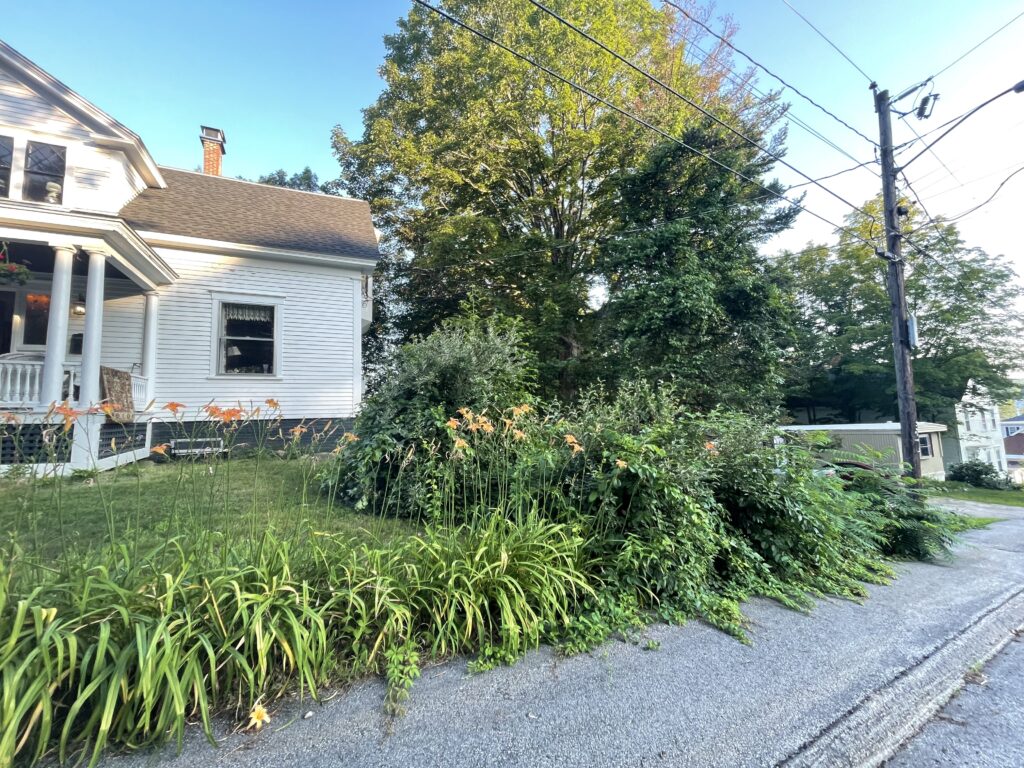
Moving onto the yard, I looked for any signs or erosion on the grass. The backyard is sloped, but adding the drip-line infiltration trench that I mentioned earlier will likely prevent any major runoff downhill. The side yard is sloped as well, but is highly vegetated with a variety of shrubs and herbaceous plants. Adding vegetation in erosion-prone areas can help hold the sediment together, filter runoff, and slow the movement of water. Similarly, we have plants growing throughout our front yard and along the sidewalk which helps slow runoff before it reaches the road. As far as chemicals go, we don’t use any fertilizers, pesticides, or herbicides on our lawn. This helps prevent harmful pollutants and excess nutrients from entering the water.
So now that I’ve walked through the property, what’s next? Based on this brief assessment of our home, I plan to take some measurements in areas that I suggested need improvement, and begin implementing the stormwater management solutions. I kept materials light, and will likely only need to order a delivery of ½ – 1 ½ inch washed stone for the infiltration trenches and dry wells. This, plus a few tools like a shovel and rake (and the help of a few friends and family members) is all we’ll need to make the property more watershed friendly.
After going through a quick stormwater assessment example, I hope that you now have some of the knowledge needed to perform a self-assessment of your property. You can also reach out to us at NLRA for a free stormwater assessment. We’re happy to help! For more techniques for managing stormwater, visit https://newfoundlake.org/stormwater-resources/.

